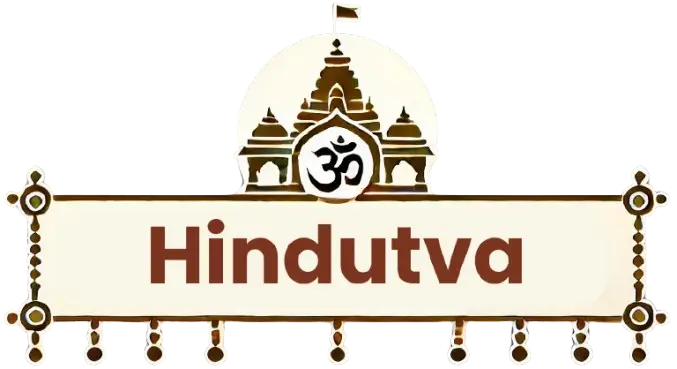Discover Khandoba, Maharashtra’s warrior-god with deep folk roots. Learn about his mythology, rituals, and cultural significance, and explore the iconic Jejuri Temple and its vibrant traditions.
Among Maharashtra’s many deities, Khandoba stands out as a fascinating figure whose roots blend mythology, folk traditions, and deep spiritual significance. Known as the Warrior-God of Maharashtra, Khandoba is not only a protector and guardian but also a unifying force across caste, class, and religious divides. His worship transcends social hierarchies, making him one of the most revered deities in the state.

As a child, I remember visiting the Jejuri Temple, one of the most famous shrines dedicated to Khandoba, with my family. The sight of turmeric powder being tossed in the air and covering everything in a golden hue remains etched in my memory. For devotees, turmeric represents prosperity and blessings from Khandoba. That visit sparked my fascination with this deity, whose story is a rich tapestry of warrior valor, spiritual significance, and cultural unity.
The Origins of Khandoba: Warrior and Protector
Khandoba, also known as Mhalasa, Martanda Bhairava, or Malhari, is an incarnation of Lord Shiva. He is celebrated as a god who protects his devotees and annihilates evil forces, symbolizing the triumph of good over evil.
Mythological Story of Khandoba
The most popular legend of Khandoba revolves around his battle with the demons Mani and Malla, who terrorized the world and disrupted the balance of nature. The gods pleaded with Shiva to intervene, and he took the form of Martanda Bhairava, a fierce warrior armed with divine weapons. Riding a white horse and accompanied by his dog, Khandoba descended to vanquish the demons. His victory earned him the title “Malhari,” meaning the slayer of Malla.
For a detailed exploration of Khandoba’s mythology, visit this resource.
The Cultural Significance of Khandoba
Khandoba holds a special place in Maharashtra’s cultural and spiritual landscape. His worship is deeply rooted in folk traditions and reflects a harmonious blend of Shaivism, Vaishnavism, and local tribal practices.
A Deity for All
One of Khandoba’s most remarkable aspects is his inclusivity. He is worshipped by people across caste and religious lines, including Marathas, Dalits, Dhangars (shepherds), and even Muslims. This universal appeal highlights his role as a unifying force.
Symbolism in Worship
Khandoba’s iconography reflects his role as a warrior and protector. He is often depicted wielding a sword, seated on a horse, and accompanied by his wives, Mhalasa and Banai. These symbols represent his ability to balance warrior strength with familial love.
Jejuri Temple: The Heart of Khandoba Worship
The Jejuri Temple, located near Pune, is the most iconic shrine dedicated to Khandoba. Known as the “Golden Fort” because of the turmeric offerings, it attracts lakhs of devotees each year.
Highlights of the Jejuri Temple
- The Turmeric Ritual
The unique practice of throwing turmeric powder during rituals transforms the temple into a sea of gold. Devotees believe turmeric symbolizes prosperity and Khandoba’s blessings. - The Steps of Faith
Devotees climb 450 steps to reach the temple, a physical manifestation of their devotion and perseverance. - Fairs and Festivals
The Champa Shashti festival, celebrated over six days, marks Khandoba’s victory over Mani and Malla. The temple becomes a hub of cultural and spiritual activities during this period.
For information on visiting the Jejuri Temple, check out this guide.
Rituals and Practices Associated with Khandoba Worship
Worshipping Khandoba is a unique blend of Vedic and folk traditions, reflecting the diverse cultural fabric of Maharashtra.
Common Rituals
- Turmeric Offerings
Devotees offer turmeric powder, known as bhandara, as a sign of gratitude and devotion. Turmeric is believed to have purifying and auspicious qualities. - Animal Sacrifices
In some traditional practices, goats or chickens are sacrificed to honor Khandoba. While controversial, these rituals are seen as acts of devotion in many rural communities. - Fasting and Chanting
Devotees observe fasts and chant hymns like the Malhari Mahatmya, a sacred text that narrates Khandoba’s deeds and virtues.
Lessons from Khandoba’s Story
Khandoba’s mythology and worship offer profound lessons that resonate deeply in today’s world:
- Unity in Diversity
Khandoba’s acceptance by people of all backgrounds highlights the importance of inclusivity and harmony. - Strength and Compassion
As a warrior and a family man, Khandoba embodies the balance between strength and love. - Faith and Perseverance
Climbing the steps to Jejuri Temple is a testament to the perseverance and unwavering faith of his devotees.
Personal Reflection: My Visit to Jejuri
Visiting the Jejuri Temple with my family was a transformative experience. I vividly remember the climb up the steep steps, surrounded by devotees chanting Khandoba’s name. The air was thick with the aroma of turmeric and the sound of drums. When we finally reached the temple, the sight of the deity, bathed in golden light, filled me with a sense of awe and peace.
My grandfather explained the significance of the turmeric ritual, and as I joined others in tossing the powder, I felt a connection not only to Khandoba but also to the generations of devotees who had walked this path before me.
Modern Relevance of Khandoba Worship
In a rapidly modernizing world, Khandoba’s teachings remain relevant. His emphasis on justice, unity, and protection serves as a reminder to uphold these values in our communities.
Efforts are also being made to preserve Khandoba’s traditions, with initiatives to document his mythology, rituals, and cultural significance. Learn more about these efforts here.
Conclusion: Khandoba’s Enduring Legacy
Khandoba, the warrior-god of Maharashtra, is more than a mythological figure. He represents resilience, unity, and devotion, embodying the spirit of Maharashtra’s people. From his heroic tales to the vibrant rituals at Jejuri Temple, Khandoba continues to inspire faith and cultural pride.
For those seeking a deeper connection with Maharashtra’s spiritual heritage, a journey to Jejuri and an exploration of Khandoba’s legacy are experiences that will leave a lasting impact.
Author:
Dr. Aryan Mishra – Historian & Cultural Analyst
Email: aryanmishra@hindutva.online

